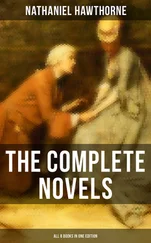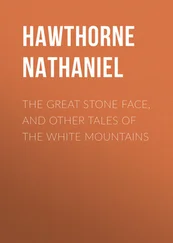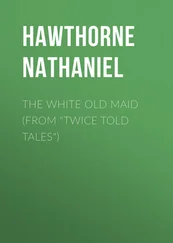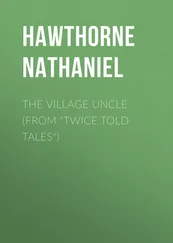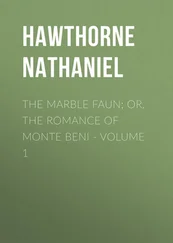After contemplating a little while a scene which their long residence in Rome had made familiar to them, Kenyon and Hilda again let their glances fall into the piazza at their feet. They there beheld Miriam, who had just entered the Porta del Popolo, and was standing by the obelisk and fountain. With a gesture that impressed Kenyon as at once suppliant and imperious, she seemed to intimate to a figure which had attended her thus far, that it was now her desire to be left alone. The pertinacious model, however, remained immovable.
And the sculptor here noted a circumstance, which, according to the interpretation he might put upon it, was either too trivial to be mentioned, or else so mysteriously significant that he found it difficult to believe his eyes. Miriam knelt down on the steps of the fountain; so far there could be no question of the fact. To other observers, if any there were, she probably appeared to take this attitude merely for the convenience of dipping her fingers into the gush of water from the mouth of one of the stone lions. But as she clasped her hands together after thus bathing them, and glanced upward at the model, an idea took strong possession of Kenyon’s mind that Miriam was kneeling to this dark follower there in the world’s face!
“Do you see it?” he said to Hilda.
“See what?” asked she, surprised at the emotion of his tone. “I see Miriam, who has just bathed her hands in that delightfully cool water. I often dip my fingers into a Roman fountain, and think of the brook that used to be one of my playmates in my New England village.”
“I fancied I saw something else,” said Kenyon; “but it was doubtless a mistake.”
But, allowing that he had caught a true glimpse into the hidden significance of Miriam’s gesture, what a terrible thraldom did it suggest! Free as she seemed to be, — beggar as he looked, — the nameless vagrant must then be dragging the beautiful Miriam through the streets of Rome, fettered and shackled more cruelly than any captive queen of yore following in an emperor’s triumph. And was it conceivable that she would have been thus enthralled unless some great error — how great Kenyon dared not think — or some fatal weakness had given this dark adversary a vantage ground?
“Hilda,” said he abruptly, “who and what is Miriam? Pardon me; but are you sure of her?”
“Sure of her!” repeated Hilda, with an angry blush, for her friend’s sake. “I am sure that she is kind, good, and generous; a true and faithful friend, whom I love dearly, and who loves me as well! What more than this need I be sure of?”
“And your delicate instincts say all this in her favor? — nothing against her?” continued the sculptor, without heeding the irritation of Hilda’s tone. “These are my own impressions, too. But she is such a mystery! We do not even know whether she is a countrywoman of ours, or an Englishwoman, or a German. There is Anglo-Saxon blood in her veins, one would say, and a right English accent on her tongue, but much that is not English breeding, nor American. Nowhere else but in Rome, and as an artist, could she hold a place in society without giving some clew to her past life.”
“I love her dearly,” said Hilda, still with displeasure in her tone, “and trust her most entirely.”
“My heart trusts her at least, whatever my head may do,” replied Kenyon; “and Rome is not like one of our New England villages, where we need the permission of each individual neighbor for every act that we do, every word that we utter, and every friend that we make or keep. In these particulars the papal despotism allows us freer breath than our native air; and if we like to take generous views of our associates, we can do so, to a reasonable extent, without ruining ourselves.”
“The music has ceased,” said Hilda; “I am going now.”
There are three streets that, beginning close beside each other, diverge from the Piazza del Popolo towards the heart of Rome: on the left, the Via del Babuino; on the right, the Via della Ripetta; and between these two that world-famous avenue, the Corso. It appeared that Miriam and her strange companion were passing up the first mentioned of these three, and were soon hidden from Hilda and the sculptor.
The two latter left the Pincian by the broad and stately walk that skirts along its brow. Beneath them, from the base of the abrupt descent, the city spread wide away in a close contiguity of red-earthen roofs, above which rose eminent the domes of a hundred churches, beside here and there a tower, and the upper windows of some taller or higher situated palace, looking down on a multitude of palatial abodes. At a distance, ascending out of the central mass of edifices, they could see the top of the Antonine column, and near it the circular roof of the Pantheon looking heavenward with its ever-open eye.
Except these two objects, almost everything that they beheld was mediaeval, though built, indeed, of the massive old stones and indestructible bricks of imperial Rome; for the ruins of the Coliseum, the Golden House, and innumerable temples of Roman gods, and mansions of Caesars and senators, had supplied the material for all those gigantic hovels, and their walls were cemented with mortar of inestimable cost, being made of precious antique statues, burnt long ago for this petty purpose.
Rome, as it now exists, has grown up under the Popes, and seems like nothing but a heap of broken rubbish, thrown into the great chasm between our own days and the Empire, merely to fill it up; and, for the better part of two thousand years, its annals of obscure policies, and wars, and continually recurring misfortunes, seem also but broken rubbish, as compared with its classic history.
If we consider the present city as at all connected with the famous one of old, it is only because we find it built over its grave. A depth of thirty feet of soil has covered up the Rome of ancient days, so that it lies like the dead corpse of a giant, decaying for centuries, with no survivor mighty enough even to bury it, until the dust of all those years has gathered slowly over its recumbent form and made a casual sepulchre.
We know not how to characterize, in any accordant and compatible terms, the Rome that lies before us; its sunless alleys, and streets of palaces; its churches, lined with the gorgeous marbles that were originally polished for the adornment of pagan temples; its thousands of evil smells, mixed up with fragrance of rich incense, diffused from as many censers; its little life, deriving feeble nutriment from what has long been dead. Everywhere, some fragment of ruin suggesting the magnificence of a former epoch; everywhere, moreover, a Cross, — and nastiness at the foot of it. As the sum of all, there are recollections that kindle the soul, and a gloom and languor that depress it beyond any depth of melancholic sentiment that can be elsewhere known.
Yet how is it possible to say an unkind or irreverential word of Rome? The city of all time, and of all the world! The spot for which man’s great life and deeds have done so much, and for which decay has done whatever glory and dominion could not do! At this moment, the evening sunshine is flinging its golden mantle over it, making all that we thought mean magnificent; the bells of all the churches suddenly ring out, as if it were a peal of triumph because Rome is still imperial.
“I sometimes fancy,” said Hilda, on whose susceptibility the scene always made a strong impression, “that Rome — mere Rome — will crowd everything else out of my heart.”
“Heaven forbid!” ejaculated the sculptor. They had now reached the grand stairs that ascend from the Piazza di Spagna to the hither brow of the Pincian Hill. Old Beppo, the millionnaire of his ragged fraternity, it is a wonder that no artist paints him as the cripple whom St. Peter heals at the Beautiful Gate of the Temple, — was just mounting his donkey to depart, laden with the rich spoil of the day’s beggary.
Читать дальше


